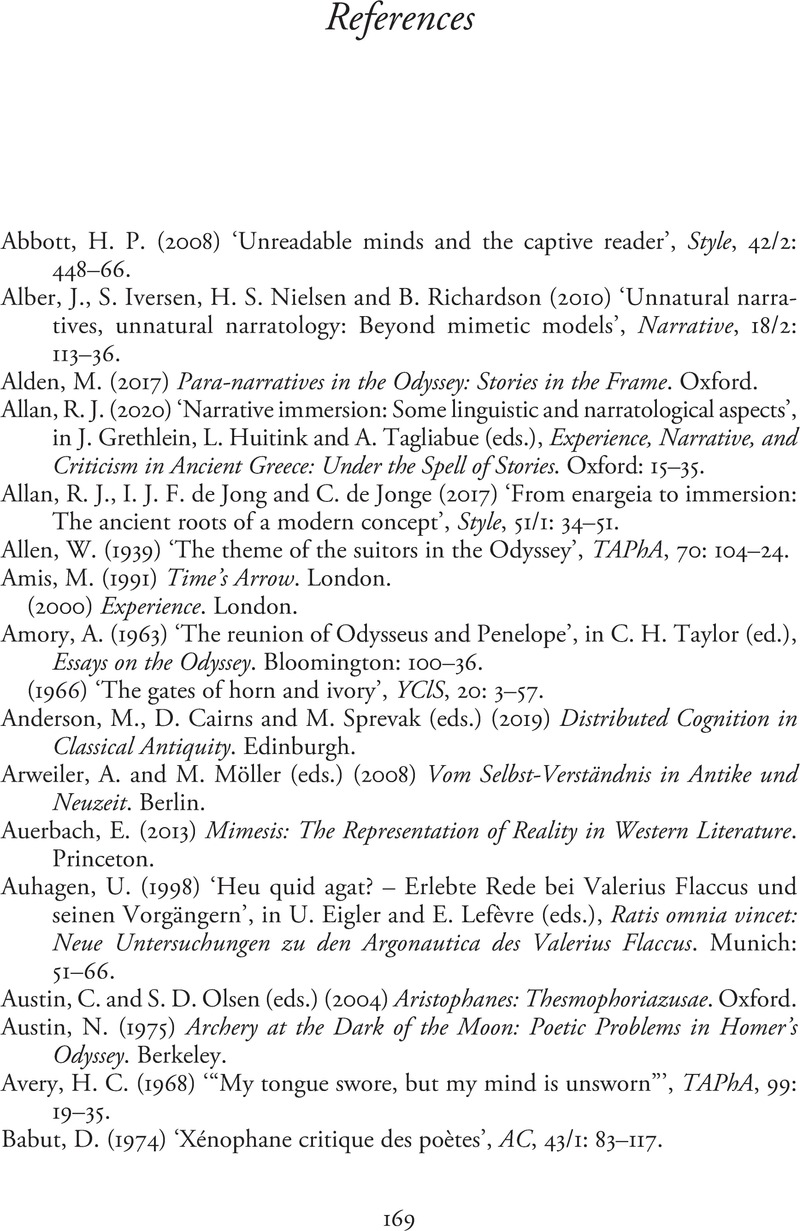Book contents
- Ancient Greek Texts and Modern Narrative Theory
- Ancient Greek Texts and Modern Narrative Theory
- Copyright page
- Contents
- Figures
- Acknowledgements
- Chapter 1 Narratology and Classics
- Chapter 2 Word and World: Fiction(ality)
- Chapter 3 Voice(s): Author/Narrator/Character
- Chapter 4 Minds
- Chapter 5 Motivation
- Chapter 6 Ancient Texts and Postmodern Challenges
- References
- Index Locorum
- General Index
- References
References
Published online by Cambridge University Press: 11 May 2023
- Ancient Greek Texts and Modern Narrative Theory
- Ancient Greek Texts and Modern Narrative Theory
- Copyright page
- Contents
- Figures
- Acknowledgements
- Chapter 1 Narratology and Classics
- Chapter 2 Word and World: Fiction(ality)
- Chapter 3 Voice(s): Author/Narrator/Character
- Chapter 4 Minds
- Chapter 5 Motivation
- Chapter 6 Ancient Texts and Postmodern Challenges
- References
- Index Locorum
- General Index
- References
Summary

- Type
- Chapter
- Information
- Ancient Greek Texts and Modern Narrative TheoryTowards a Critical Dialogue, pp. 169 - 190Publisher: Cambridge University PressPrint publication year: 2023



